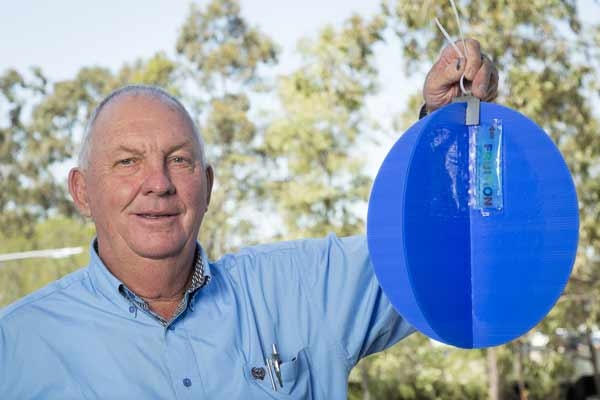The first synthetic lure in the world to monitor and control egg-laying female Queensland fruit flies is now available to tree crop growers around Australia.
Fruition was launched this week by AgNova Technologies and development partner, Griffith University in Queensland.
The release of Fruition addresses a major gap for growers in their integrated pest management programs for Queensland fruit fly with an effective, chemical-free solution.
Andrew Glover, Business Manager with AgNova Technologies, said Fruition was developed over more than a decade of scientific study, led by Professor Dick Drew from Griffith University.
“We are delighted to release Fruition because we believe it will have a real impact on the fruit fly problem and help growers produce better, more marketable fruit,” said Mr Glover.
“Growers are already using monitoring traps and protein baits for immature and developing flies, but there has been nothing available that targets egg-laying females seeking fruit to lay their eggs until Fruition.”
He said the blue, disc shaped trap included a sachet of slow release lure which worked as an olfactory attractant, releasing a synthetic ‘ripe fruit’ smell for up to eight weeks. It has a sticky surface to trap flies where they land.
Fruition can be used in tropical fruits, such as mango and feijoa, as well as pome and stone fruit, citrus, cherries and grapevines and will be available Australia wide.
World class research
Mr Glover said the work by Griffith University was world class, backed by a strong background of knowledge in fruit fly behaviour in orchards.
Professor Drew has almost 50 years’ experience in fruit fly research.
He explained that while most of the female fruit flies entering the orchard were immature, the 20% that were mature were not attracted and controlled by protein baits.
“That’s because protein sprays only attract the immature flies looking for that feed source for their development,” he explained.
In developing Fruition, Prof. Drew and his team investigated the volatile chemicals coming off ripening fruit, selecting chemicals which were then tested for their attractiveness to Queensland fruit flies in the laboratory, in a field cage and in broader field studies.
As a result of those studies, a blend of several chemicals was chosen for Fruition.
Prof. Drew added that the physical qualities of the trap were also tested for their ability to attract flies.
“We did quite extensive research over many years to work out which colour was most attractive to the Queensland fruit fly and we found a shade of blue was the best visual attractant for this species,” he said.
Similarly, the shape of the trap is no coincidence, but a result of years of research.
In terms of control, Fruition works by simply having a sticky surface, so egg-laying female flies only need to land on it, not find their way into a trap.
“We are pleased that at long last, our work will be used in orchards this year,” said Prof. Drew.
Griffith University is continuing its work to refine and advance the system, with an eye to developing the ideal protein bait to use in conjunction with Fruition.
For information phone 03 9899 8100
email
web www.agnova.com.au
See this article in Tree Fruit Oct 2016




















